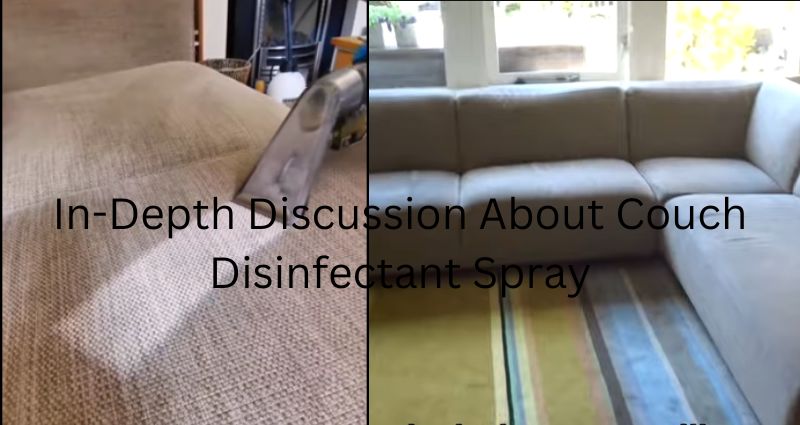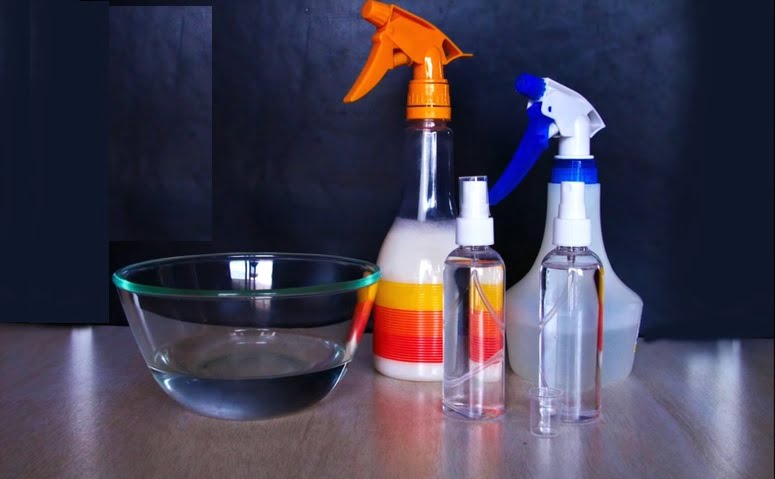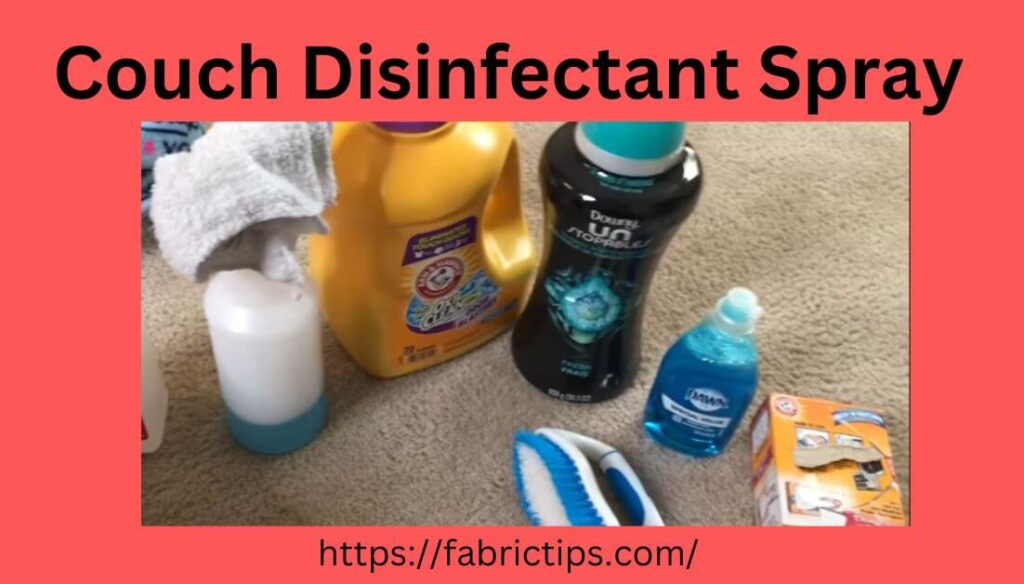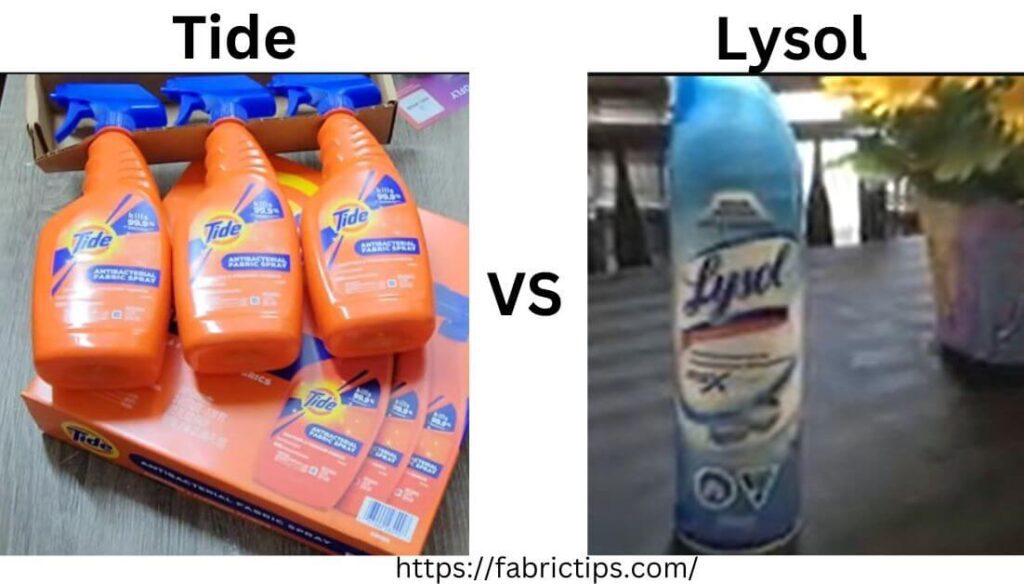Last Updated on December 13, 2025 by Wahid
During the day, you probably enjoy sitting on your couch the most. We all love to relax on the couch with a movie and some popcorn. However, your couch needs to be disinfected from time to time. This is especially true during the flu and cold season in the winter.
Since we spend so much time on the couch, food, grime, dust, and dirt will surely accumulate in the crevices. Nevertheless, washing your couch isn’t the same as cleaning the rest of the house or even your furniture.
How should you use couch disinfectant spray? To begin with, you should vacuum it. Vacuuming your couch prevents dirt from becoming muddy and will remove grime build-up. Almost every form of disinfection requires some moisture, which should not be combined with dirt.
However, depending on the material of the couch, you should know how to clean & disinfect it. In this article, you’ll know several effective ways to complete the process perfectly.
In-Depth Discussion About Couch Disinfectant Spray

Not knowing where to start to clean, you may make mistakes! For cleaning your couch, follow these top 13 best steps to ensure that it feels and smells clean, fresh, & thoroughly sanitized.
Step 1.
“Be Sure To Read The Manufacturer’s Instructions Or The Cleaning Tag Before Trying Anything”
Check the care instructions provided by the manufacturers before starting to clean your couch. Most couches come with a label that can be torn off easily. For lost tags, or if you cannot find the tag, you should check the instructions online before starting. Step one is extremely important since the wrong cleaning materials can permanently damage your couch.
You can identify the type of cleaning materials you need to use on your couch by one of the four letters on the care tag.
- “W” indicates that water-based cleaners only are allowed.
- “W/S” indicates that water and solvent solutions can be used to clean your couch.
- “S” indicates that you should only use solvent-based cleaning solutions on the couch.
- “X,” which means you should only brush or vacuum your couch, and another cleaning solution should be avoided.
There are differences between couches because they are not all created equal. There are many types of couches, including fabric, leather, microfiber, or upholstery.
Step 2.
“Vacuum Cleaners Are Capable Of Cleaning More Than Just Floors”

- As you are vacuuming your carpet, set your vacuum to clean the couch before putting it away.
- Perhaps you didn’t realize it, but when it comes to cleaning your couch, your vacuum cleaner will be your best friend.
- Whether you plan to steam clean your couch or just want to get rid of dust, a vacuum can handle it.
- Simply remove your vacuum’s handheld portion, turn it on, and enjoy the results.
- Keep in mind that you should vacuum the back and sides of your sofa, too.
- Regardless of whether you aren’t sitting there or they are tricky to see, it’s important to clean them to prevent germs from spreading.
Step 3.
“Distracting Stains Should Be Removed”

- Regardless of the method you choose to remove stains from your couch, we recommend that you test the cleaner in a hidden area first.
- We don’t want you to get new stains on your couch or have a piece that isn’t as dark as the others.
- You want to ensure that the cleaning solution won’t cause any irreversible damage or visible eyesores on your couch.
- Additionally, press the stain with a gentle cloth instead of rubbing, particularly when the spot is fresh.
- Matted fibers can be created by rubbing, which reduces the stain’s visibility even further.
- You’re usually better off buying a couch specific cleaning solution, but if you run out, you can make your own using mild dish detergent & warm water.
Step 4.
“Steam Your Fabrics With A Fabric Steamer”

- When your couch has a “W” or a “W/S” on its tag, steam cleaning is likely to be most effective. Why is steam cleaning so good?
- As an example, steam cleaning can reduce germs and eliminate odors by 99.9% using high heat.
- In addition to removing annoying crumbs & stubborn stains, steam cleaning is also very energy-efficient.
- In order to get the best steam cleaning results, a little prep work is required.
- Before using the steamer, vacuum your couch thoroughly to take out pet hair, debris, and dirt.
- If you have stubborn stains, you should pre-treat them carefully, making sure your couch is treated with conditioner or a fabric shampoo before steaming.
- Often, a soil emulsifier is used prior to steam cleaning to help loosen the dirt & grime that has been ingrained in the couch.
You will get the best results after steaming if you do the best prep work. If you don’t have a fabric steamer, a clothing steamer or a burst of steam may work, too!
Step 5.
“Your Couch Should Be Sanitized”

- Sanitizing your couch is useful for a variety of reasons.
- You may want to keep other members of your family out of the cold, or perhaps your pet has been injured.
- In this case, steam cleaning can help.
- However, if your couch isn’t resistant to steam cleaning or you don’t own one, you can clean it with a disinfectant spray.
Step 6.
“Couches Should Be Treated With Caution When Bleach Is Used”

- Some people suggest bleach for removing stains on your couch, but we recommend doing a deep cleaning yourself or hiring a professional.
- Bleach is a highly powerful cleaning agent that might get rid of the stain but may leave a nasty, discolored bleach stain instead.
- It might take you longer to remove the bleach stain from your sofa if you don’t clean it without bleach.
- Rather than using products you already have at home to remove stains or odors from your couch, you might want to try using rubbing alcohol or white vinegar with a damp cloth.
- However, your choice may also depend on what type of materials your sofa is made of.
Step 7.
“Stained Areas Should Be Spot Cleaned”
- To tackle a stain and dirty spot, you should make a simple cleaning solution using water.
- Create a soapy solution by mixing cold water with laundry soap.
- To clean a stained or dirty area, blot with a clean cloth.
- White clothes are best, particularly for light-colored sofas, because colored rags may transfer dye onto them.
- Avoid damaging the fabric by blotting gently after cleaning the spot.
- Rubbed fabrics can become damaged or stained.
- Blot additional moisture with a dry cloth.
- After the fabric has dried, vacuum the nap to fluff it up and let it blend into the texture of the fabric.
Step 8.
“Covers For Removable Cushions Should Be Washed.

- For removable covers on your sofa, it might be possible to wash them.
- Before doing so, make sure the fabric can be machine washed.
- Although the sofa may be upholstered with type W, that does not mean it can be machine washed.
- When washing by machine, run a gentle cycle and use cold water.
- To dry the fabric, let it air dry. Particularly synthetic fabrics are vulnerable to heat damage.
- Let them fully dry before you put them back on the cushion.
Step 9.
“Lysol Disinfectant Spray”

Want to know how to clean your couch the simplest way? Just use Lysol disinfectant spray. In general, fabrics are safe to use with Lysol, but different materials react differently. To avoid ruining your entire sofa, it’s better to spray a test spot first.
In order to clean your couch, follow these steps:
- Spray the entire couch with water until it is slightly damp (not soaked)
- Allow it to dry naturally
To ensure the disinfectant works properly, you must leave the couch damp for a minimum of 30 seconds.
Step 10.
“Make Your Own Disinfecting Spray”

While Lysol may be handy, if you need a disinfectant spray right away, you can prepare it yourself.
In a spray bottle, mix the following ingredients:
- 2 cups of rubbing alcohol
- 1 Cup of Water
Obviously, I need to warn you (you don’t want your couch to get ruined) to test a spot first. Once the spot trial is successful, spray the entire couch with the mist, then allow it to air dry.
Step 11.
“The Best Way To Clean Your Couch’s Fabric”
- In addition, if your couch has a slipcover, make sure to disinfect it as well.
- In general, slipcovers should be machine washed cold & air dried or tumble dried low.
- So you can gently wash your slipcover on a cold cycle with a mild cleanser and hang it up to dry.
- Have your slipcover dry cleaned if it’s not machine washable.
- You can wash with Lysol or make your own disinfectant spray.
Step 12.
“Call In A Professional”
- If in doubt, it’s better to hire a professional cleaner, particularly if you can’t clean your couch with water.
- Including deep cleaning the entire couch, house cleaning services are usually not too expensive.
- Alternatively, if you don’t have time or you are physically incapable of cleaning your couch yourself, you may want to hire someone to handle it for you.
- Furthermore, hiring an expert guarantees the work will be done properly, which means you won’t accidentally damage the couch yourself.
- However, prior to using a cleaning service, we recommend reading reviews.
- In addition, it is advisable to hire a company that has insurance in case their work accidentally damages your couch.
Step 13.
“Leaves Your Couch Smelling Fresh And Clean”

- Once your couch has been thoroughly cleaned, leave it smelling as clean and fresh as it is now.
- It doesn’t matter what kind of scent you like or how bad a lingering smell is.
- You can freshen your couch with a number of products on the market.
- In between cleanings, you can use them to get rid of odors left behind by pets and accidental spills.
FREQUENTLY ASKED QUESTIONS
01. What’s an effective spray for disinfecting a couch?
Lysol Disinfectant Spray is the best spray for disinfecting a couch. With Lysol, you can kill 99% of viruses, germs, and bacteria. It can also be used on most fabrics. To sanitize your couch with it, simply spray it thoroughly (avoid soaking it), then let it air dry.
02. How do I naturally wash a fabric couch?
To avoid chemical spraying on your sofa, clean your upholstery with a steam cleaner. Steam cleaners are effective at removing dirt, as well as stains from fabric couches. They only require water to operate.
03. Does baking soda clean fabric sofas?
Although baking soda isn’t technically a cleaner, it can eliminate odors and absorb moisture. Baking soda will clean your couch, but make sure to vacuum it first. Next, generously apply baking soda over the cushions and let it sit for over 8 hours. In the end, clean the cushions with baking soda.
When you’re done, your couch will smell much better compared to what it did before.
The Bottom Line
Cleaning your furniture is best done now, particularly your sofa. Although your couch may appear clean, it isn’t; you need to apply couch disinfectant spray. Keeping your sofa fresh and sterilized requires spraying a disinfectant solution on it.
In a way, the couch is the heart of our house. It is a place to gather with family and friends. Thus, ensuring your couches are thoroughly cleaned and cared for makes sense, & now you know how to do it right!
In case your couch is getting germy, and you are concerned, follow these effective steps for disinfecting it.
Cleaning with the “steam method” is the most effective and easiest solution to disinfect, but “Lysol & homemade” disinfecting sprays can also be used.


